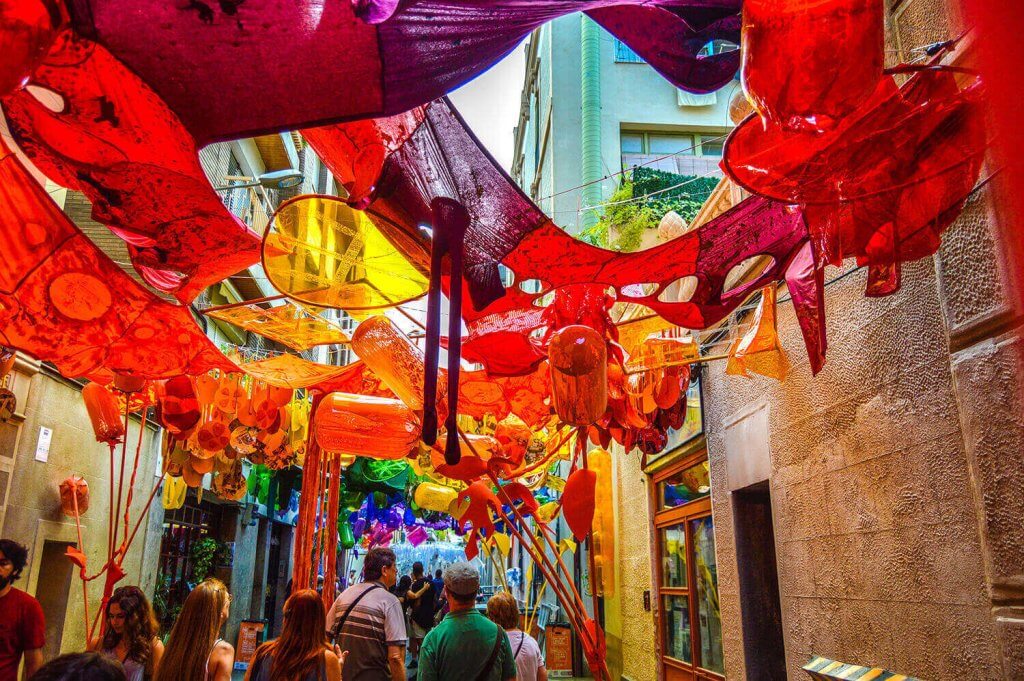The Catalan capital, Barcelona, Spain, with its cultural richness is always worth a visit and local festivities and street parties make a visit something very special. From traditional festivals to music festivals, there is always something going on, especially during the holiday season. If you are in the city on these occasions, unforgettable moments and everlasting memories are guaranteed.
We have put together an overview of major events so that you can include these opportunities when planning your trip to Barcelona in the festive season. Join the party-goers on the city streets and at the festival grounds!
Barcelona is a city that loves to celebrate, and its festival calendar is a testament to this. From traditional festivals to modern events, there’s always something happening in this vibrant city. Whether you’re interested in music, food, sports, or culture, Barcelona has a festival that’s sure to delight. In this section, we’ll take a look at some of the top festivals and events that take place in Barcelona throughout the year.
Barcelona’s seasonal events are a highlight of the city’s cultural calendar. During the winter months, the city hosts several festive events, including the New Year’s Eve celebrations in Plaça Catalunya and the Three Kings Parade. The festive season is also marked by the Fira de Santa Llúcia, a traditional Christmas market that takes place in front of the Cathedral.
In the spring, Barcelona hosts several music festivals, including the Primavera Sound and the Sónar Festival. These events feature a diverse lineup of international artists and are a must-visit for music lovers.
During the summer months, Barcelona hosts several outdoor events, including the Festes de la Mercè and the Festa Major de Gràcia. These festivals feature traditional music, dance, and food, and offer a unique experience for visitors.
In the autumn, Barcelona hosts several cultural events, including the La Mercè Festival and the Festa del Poble Sec. These events feature traditional music, dance, and theater performances, and offer a glimpse into the city’s rich cultural heritage.
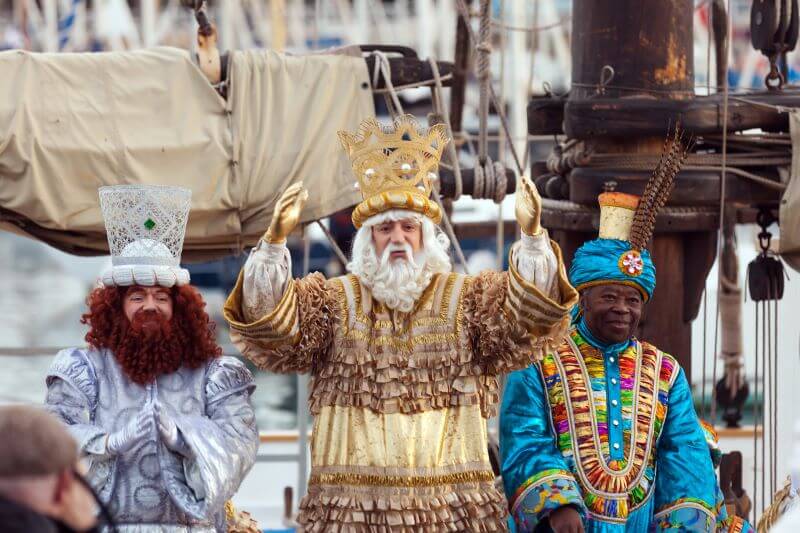
One of the citie’s most beloved celebrations is the Three Kings Parade, held annually on January 5th. This vibrant event marks the arrival of the Three Wise Men, who journey from the East to deliver gifts to children, embodying the spirit of generosity and joy.
The parade begins in the late afternoon at Parc de la Ciutadella, where the Kings are welcomed with a grand ceremony before embarking on a colorful procession through the streets. Spectators line the route, which includes iconic locations like Portal de l’Àngel and Plaça d’Espanya, eagerly awaiting the spectacle of floats, music, and performers.
As the Kings throw sweets and small gifts into the crowd, children are filled with excitement, having written letters to express their wishes. The festivities culminate in a magical light show at the Magic Fountain of Montjuïc, making it a must-see event for travelers seeking an authentic taste of Barcelona’s festive spirit.
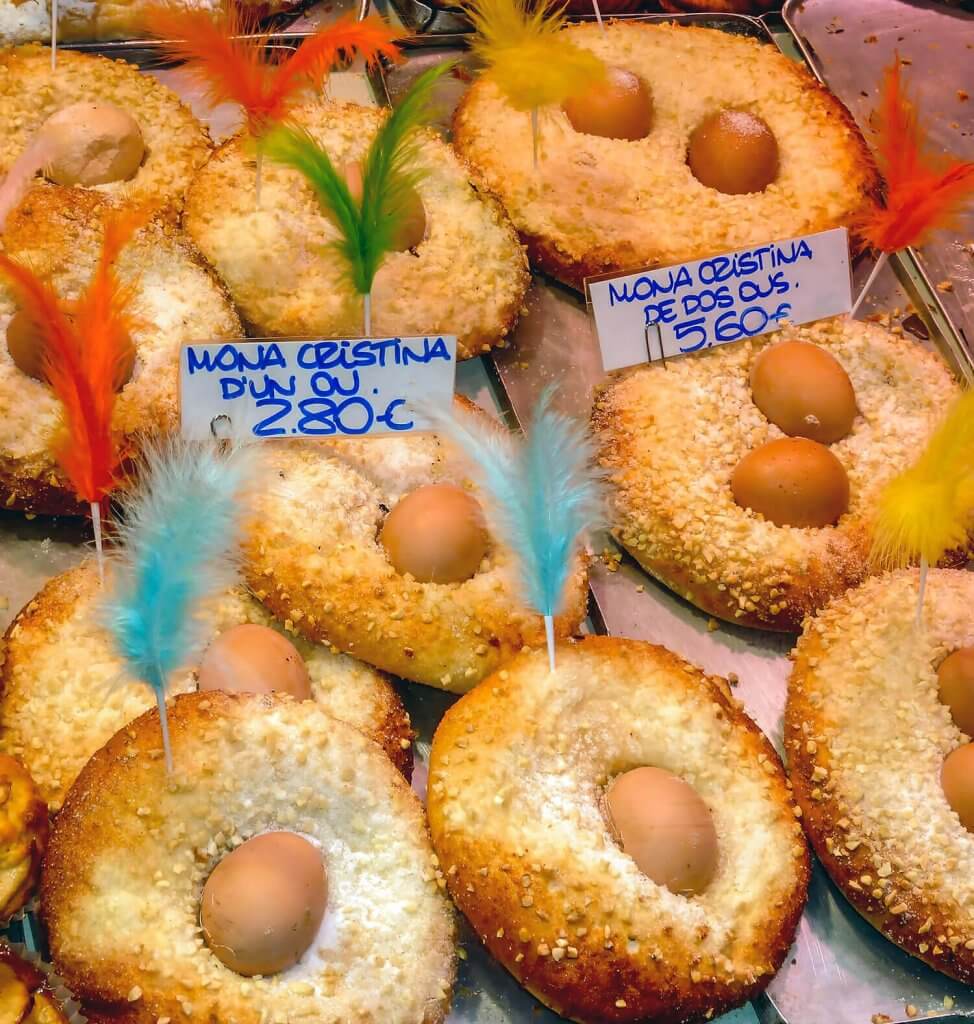
Holy Week, or Easter Week, is a time of special significance in the Christian calendar and is celebrated worldwide with different festivities and traditions. Barcelona is traditionally less religious than the south of Spain, for example. Nevertheless, a large number of festivities take place during this time. In Barcelona, the beginning of Lent is also celebrated with one last big party – and the debauchery that goes with it. Carnestoltes” is accompanied by parades such as “La Taronjada” and special events such as cookery competitions.
The festival week begins on Palm Sunday. On this day, a procession takes place around the cathedral. Other processions follow, for example on Good Friday: the procession of the Virgen de la Macarena starts from the Eglésia de Sant Agusti in the Raval neighbourhood of the old town. It starts at 5 pm on Good Friday. The solemn procession then makes a diversion to the cathedral in the Barri Gòtic, where it arrives at around 8 pm. The religious celebrations end on Easter Sunday.
The special, festive atmosphere fits in well with the start of spring. Barcelona is beautiful in spring. The sun starts to make its way back into the city, chocolate shops and patisseries have decorated their windows with wonderful works of art made of chocolate – you can see everything from “Finding Nemo” to the Sagrada Família! On Easter Sunday, people traditionally give each other a “mona”, a dough ringlet with a chocolate coating and chocolate figures.
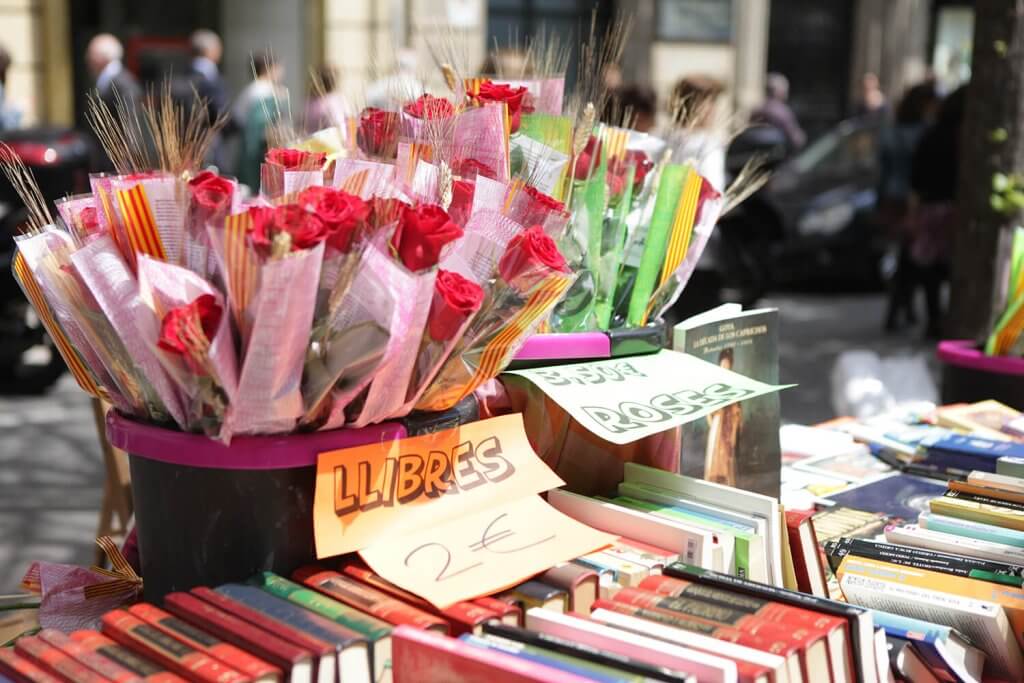
The knight George was a busy man: his expertise as a dragon slayer had already made him the patron saint of England, and word of his success against winged monsters spread and led to engagements in sunnier climes. After George, here called Jordi, had also defeated a dragon in Catalonia, he returned to his beloved with a rose.
Of course, such a heroic deed did not go unrewarded: Sant Jordi also became the patron saint of Catalonia. The Spanish national poet Miguel de Cervantes died on his day of honour in 1616, and the people of Barcelona celebrate in his honour on 23 April with a kind of Spanish Valentine’s Day: the woman receives a rose from her sweetheart, while he receives a book. Although this is no longer taken so seriously these days: Experience shows that everyone is happy to receive both a flower and a book. Or both!
Around the Ramblas you will therefore find many stalls on the streets selling roses and books. In addition to literary events, there are folk dance performances in some places such as Plaça Sant Jaume. A visit to Casa Batlló is also a good idea on this day: after all, Antoni Gaudi drew creative inspiration for his design from the legend of the dragon slayer Sant Jordi.
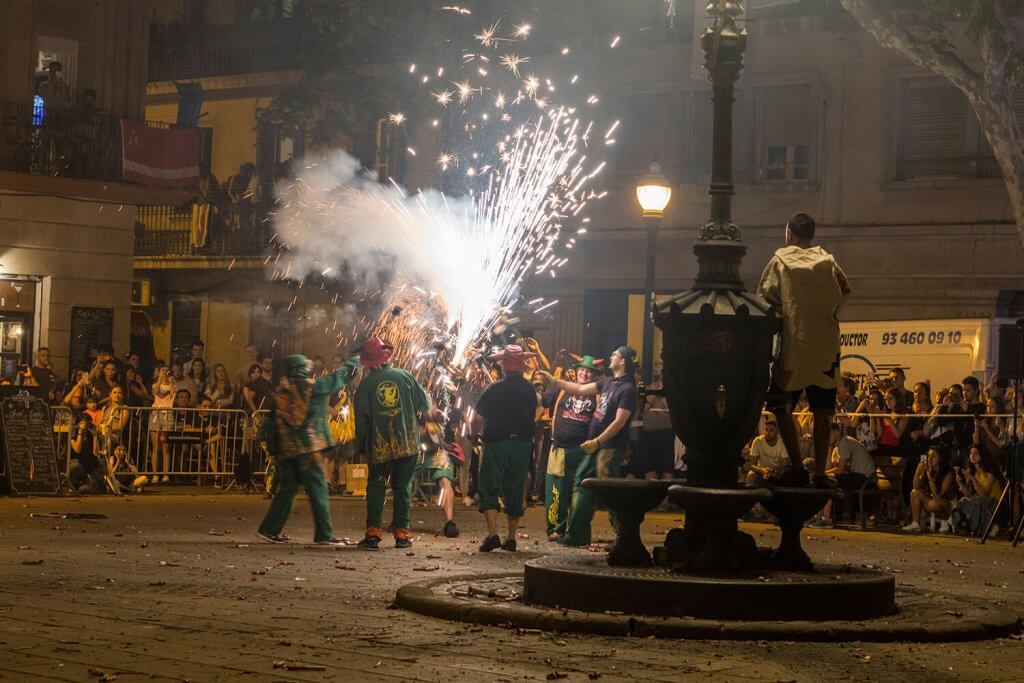
The longest day of the year, the summer solstice, is celebrated in the streets and on the beaches of Barcelona. Or rather: people celebrate through the shortest night of the year. (Sure, it’s not really the shortest night of the year – but who cares about the two days?) With the date of 23 June, the Catalans celebrate into the public holiday on 24 June – the day of their patron saint, Saint John. So it’s a good thing that the night of partying is definitely followed by a day of relaxation.
Fireworks are set off all over the city, there are special culinary offerings everywhere, there is live music in many places – the whole city is on its feet. Sant Joan is often referred to by the Catalans as ‘Nit del Foc’ – which means ‘night of fire’. The most important aspect of the festivities is the fireworks display, which can be heard throughout the city and for which extra temporary shops are set up in the days leading up to the celebrations. The highlight for many is the bonfires and fireworks on the beach, where people dance and drink at the beach bars. People party in the streets and on the beach until the next morning. And on 24 June there is a programme of contrasts: the streets of Barcelona are rarely as quiet as on the morning of St John’s Day.
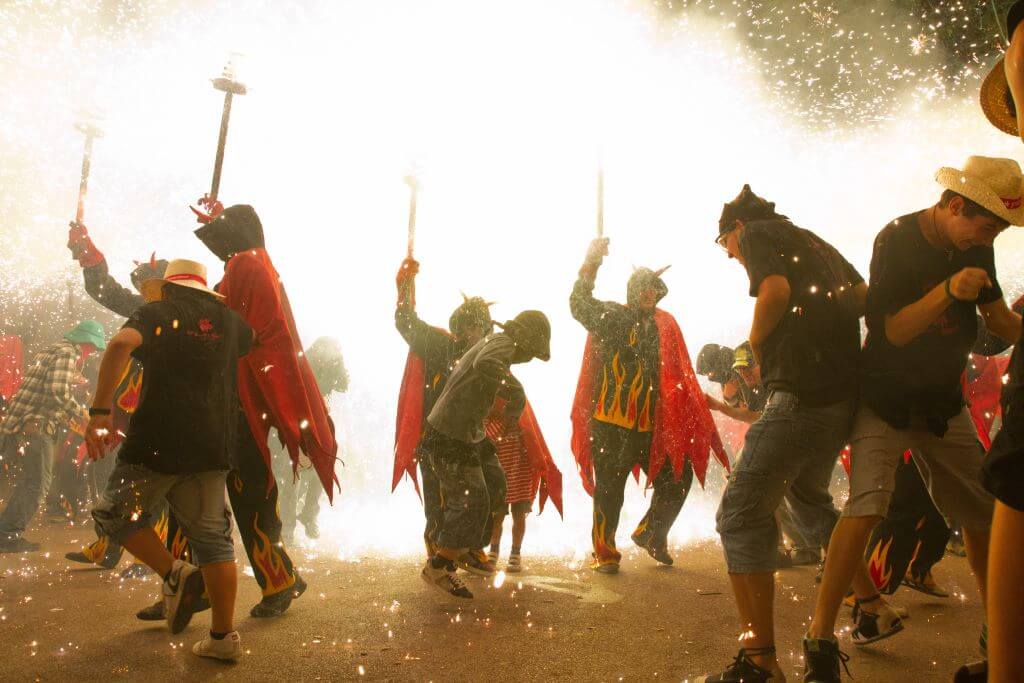
The festival of Sant Roc has been celebrated in Barcelona since 1589, making it the oldest in the city – and it has never failed! The festivities take place on 16 August in front of Barcelona Cathedral. The festival is a tribute to Sant Roc, Saint Roch, who, according to legend, caught the plague on a visit to the city and sought refuge within the Roman walls. Everyone ignored him, except for the local baker’s dog, who fed him with bread rolls. Thanks to this help, he recovered and was able to continue on his way, accompanied by the little animal. Sant Roc is credited with protecting the inhabitants of the neighbourhood from an outbreak of the plague in 1583, as no one died as a result of the epidemic. In the Plaça de la Catedral there is an image of Saint Roch, which is at the centre of the celebrations. One of the highlights of the festival is the “correfoc”, a procession of people dressed up as devils and dragons, throwing fireworks and dancing and jumping around. People also release a giant balloon with the image of an unpopular personality while shouting “Out, out!”. This spectacle dates back to the 19th century and can be traced back to the enthusiasm of many locals for balloons at the time. There is also a special sweet for this holiday: “Panellets” are eaten to celebrate Sant Roc. They are distributed during a mass on Sant Roc.
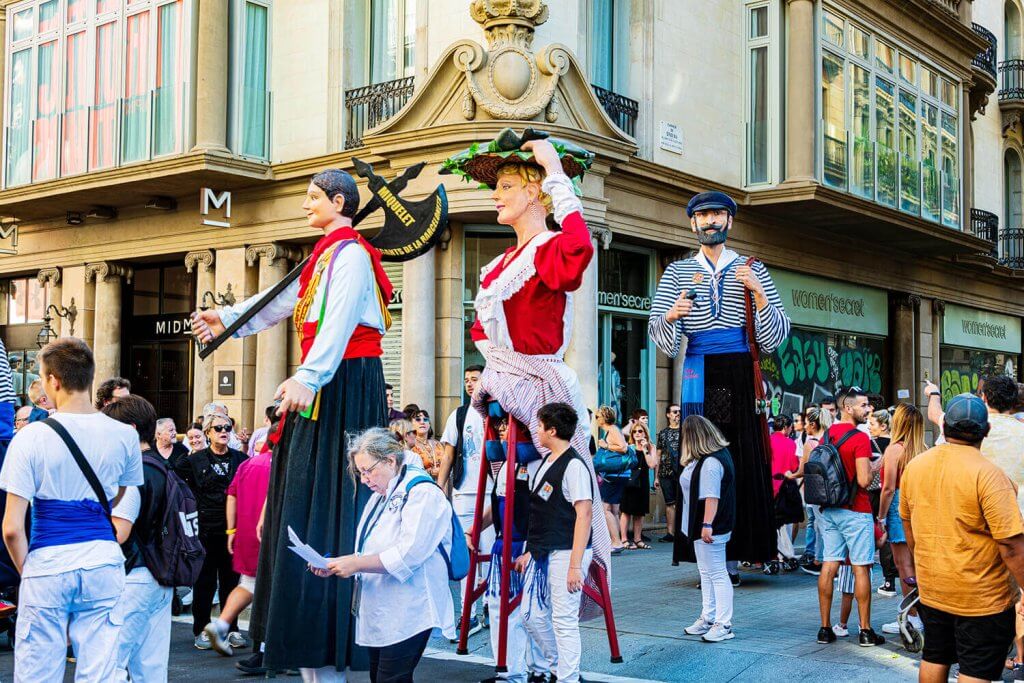
A four-day event once again celebrates one of Barcelona’s patron saints. The story behind it: In 1687, the city of Barcelona was struck by a terrible swarm of locusts and placed all hope of salvation in the generous lap of the Virgin Mary of Mercy. When she promptly drove away the troublesome plague, the council declared her the patron saint of the city and organised a festival in her honour. Barcelona’s patron saint festival – Feste de la Merce – marks the end of summer and is now one of the biggest street parties in Europe. The festival offers numerous events, various parades, concerts, food markets, a fireworks show on Montjuïc – and the world-famous Castells: the building of human towers on the Placa de Sant Jaume. The people of Barcelona end the festival season with a bang, with light shows in Ciutadella Park, laser shows on the façade of the City Hall, pyrotechnics on Barceloneta beach and the magnificent fireworks finale at the Magic Fountains of Montjuïc.
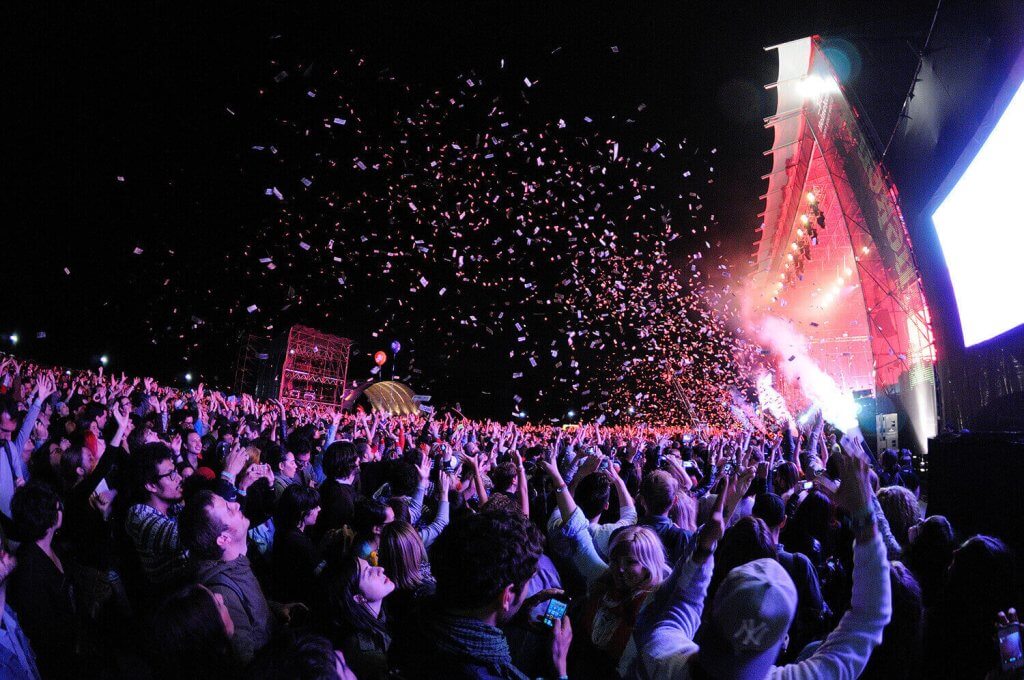
Originally launched as a festival primarily for newcomers, the Primavera Festival has expanded its line-up over time to include internationally renowned acts – even world-famous superstars are now guests in Barcelona every year in May/June. The only thing they have in common is the selection: Whatever you like is allowed. This makes Primavera a festival where it is worth keeping an eye on the programme – sooner or later there will be something for everyone. The programme ranges from techno to metal, from house to pop. The festival now has several locations throughout the city. Sometimes you want to be in several places at once!
Primavera Music Festival
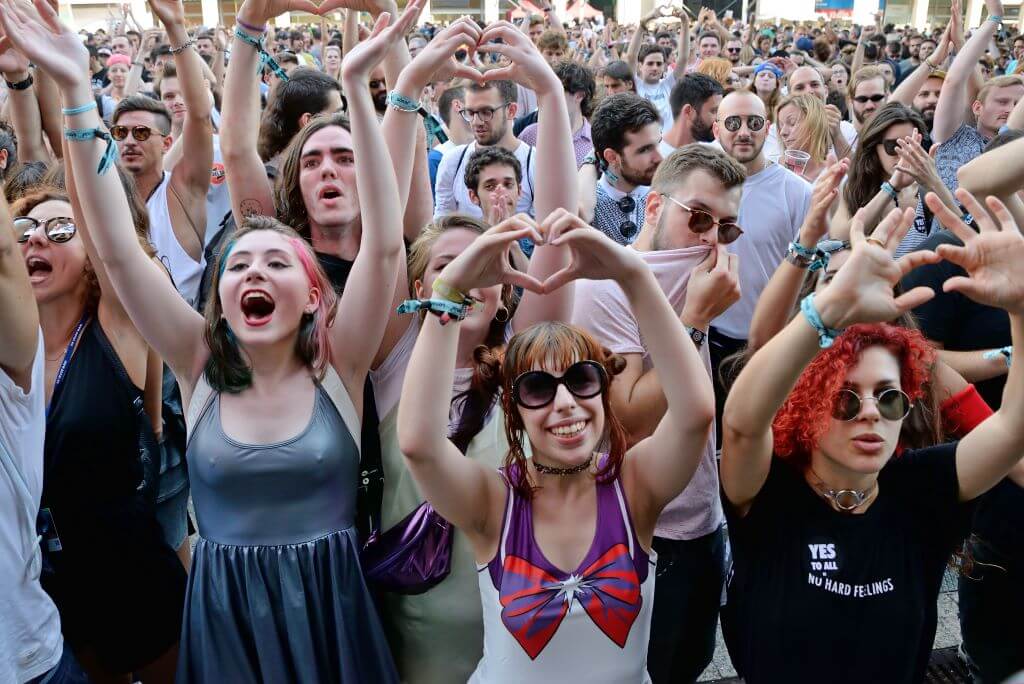
Over the years of its existence, the Sonar Festival, which usually takes place in early summer (third weekend in June), has built up a reputation as one of the world’s best festivals for electronic and modern (pop) music. After all, it has been around since the 90s and has its roots in the same movement as the Berlin Love Parade. In other words: it’s a fantastic party!
However, from the very beginning, the programme was less focused on one musical genre. Between (still) unknown newcomers and well-known headliners from the international pop business, the festival offers a broad mix of different music.
Shuttle buses will take visitors around the city between the two festival venues. The accompanying parties are definitely not to be sneezed at either – there are also special events in the city’s clubs, and the bars and beaches become the setting for the unofficial accompanying programme for up to 120,000 festival visitors.
Sonar Music Festival
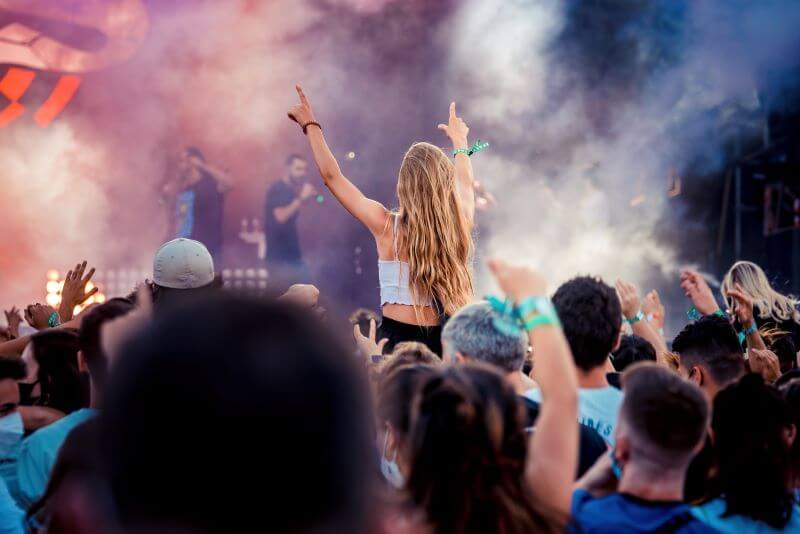
The music is playing in Barcelona! Every summer, the musical guests and their visitors come together… The Cruilla Festival usually has the most surprising musical acts to offer, and the line-up follows no recognisable logic. Ska, pop, hip-hop, folk, rock … the main thing is to have fun! With the Cruilla de Cultures, the festival has been expanded to include a multicultural perspective, with neighbourhood initiatives and migration helpers also participating in the programme.
And, don’t miss it: Throughout July, national and international artists can be seen in clubs and public places such as the Poble Espanyol open-air museum. The energy and excitement of the Cruilla Festival are comparable to the celebrations of New Year’s Eve, making it a highlight of the summer.
Cuilla Summer Music Festival
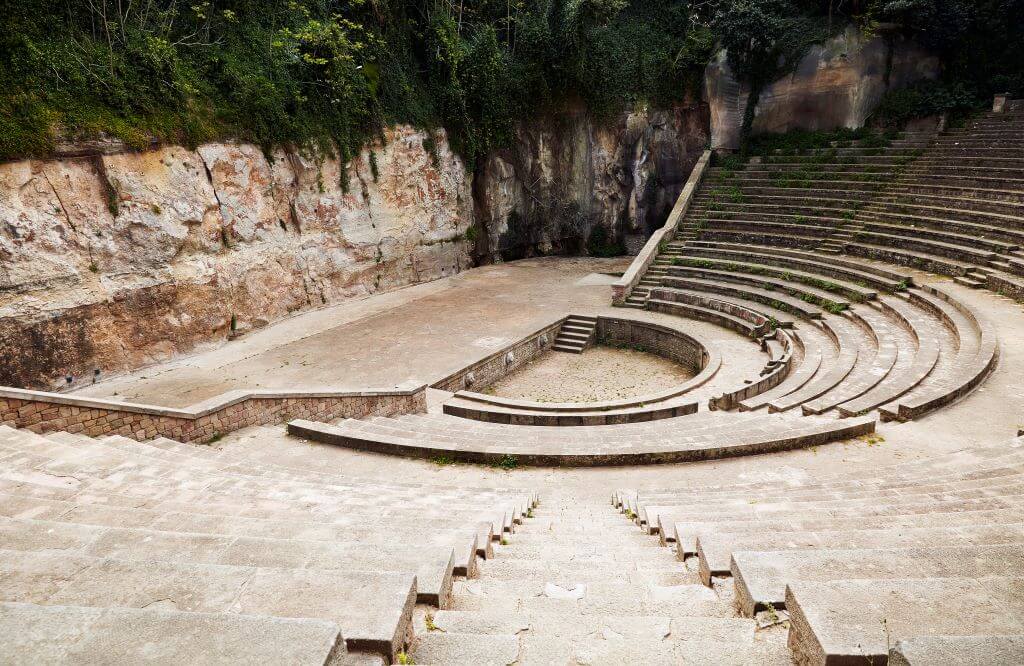
Grec is probably the most ambitious of the major festivals in Barcelona. Every summer, a variety of artists are invited to perform theatre, dance, music and more at sensational venues in the city, such as the eponymous Grec Teatre. The ‘Greek Theatre’ was built in 1929 as a replica of the ancient Greek amphitheatre in Epidauros and is a fantastic place to experience contemporary theatre under the stars. More and more performances are being organised in English. The Grec Festival, along with the Festes de la Mercè, showcases the rich cultural heritage of Barcelona.
Monegros Festival
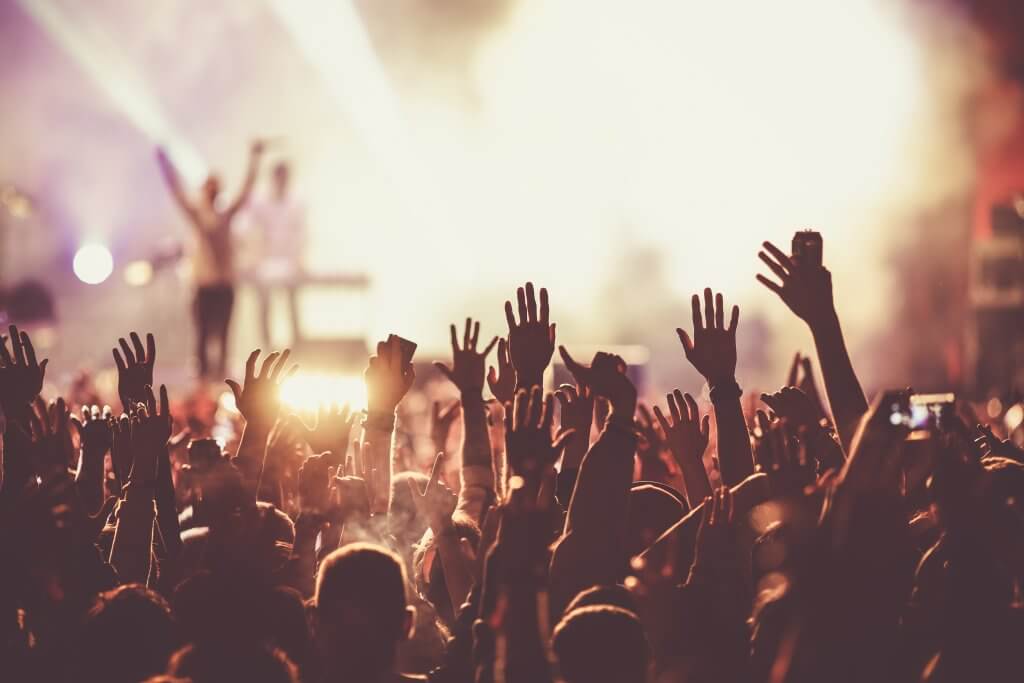
Spain’s biggest rave has been rocking a piece of desert near Fraga for almost 20 years and takes place every year on one long night in July. More than 40,000 revellers usually turn up to dance to world-class acts from the world of electro, techno, drum and bass and dubstep during an epic 22-hour party. The official festival buses will take participants from Barcelona to the festival in comfort.
Grec Festival
Barcelona is a city that’s passionate about sports, and there are plenty of outdoor events to enjoy throughout the year. Here are some of the top sports and outdoor events in Barcelona:
Taking place in March, the Barcelona Marathon is one of the most popular marathons in Europe. The course takes runners through some of the city’s most iconic landmarks, including the Sagrada Familia and Park Güell. It’s a fantastic way to see the city while participating in a major event.
The Copa del Rey is a prestigious sailing regatta that takes place in Barcelona every summer. The event attracts top sailors from around the world and is a must-see for anyone who loves sailing. The sight of sleek yachts cutting through the Mediterranean waters is truly spectacular.
The Barcelona International Boat Show is one of the biggest boat shows in the Mediterranean. Held in October, this event features a wide range of boats, from luxury yachts to small sailboats. It’s a paradise for boating enthusiasts and a great opportunity to see the latest in maritime technology.
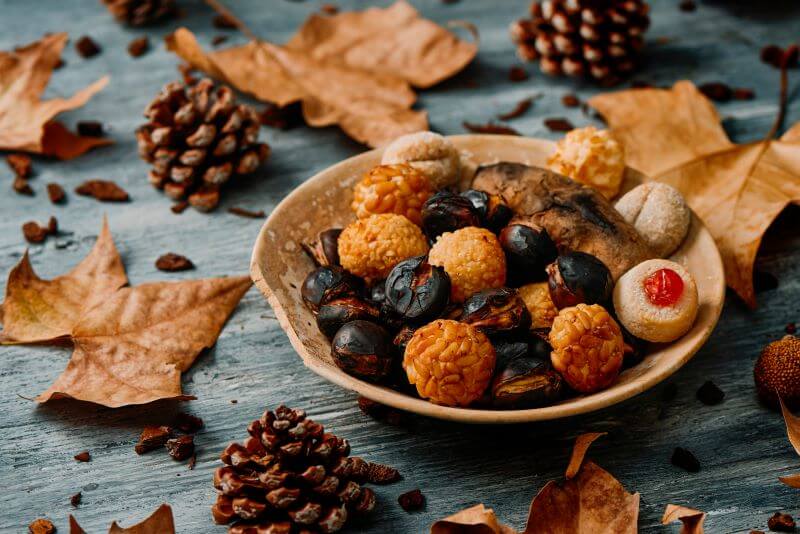
Barcelona is a foodie’s paradise, and there are plenty of festivals throughout the year that celebrate the city’s culinary delights.
Barcelona Wine Week is a popular event that takes place in February. The festival features a wide range of wines from around the world, as well as food pairings and live music. It’s a must-visit for wine enthusiasts looking to explore new flavors and enjoy a sophisticated evening out.
La Castanyada is a traditional festival that is deeply rooted in Catalonia and celebrated on the evening of 31st October and 1st November, All Saint’s Day. People eat chestnuts – castanyes in Catalan –, panellets – small balls of almond paste coated in pine nuts –, sweet potatoes and other autumnal produce. You can buy the treats in the pastry shops and bakeries of Barcelona. Watch out for the specialist vendors who also take to the streets to sell their hot freshly-roasted chestnuts.
Craft beer lovers will not want to miss out on the Barcelona Beer Festival. The festival, which will be hosting a large number of exhibitors and more than 100 beer taps, offers beer lovers the chance to discover up to 500 different beers from all the world. The festival also features numerous activities such as showcooking, presentations and beer tasting. While this takes place in March, in October you can also find a beer festival with local craft breweries introducing their products at the Mash Beer Festival.
Look out for more festivals, local food and produce, as things like food truck gatherings or street food events mights happen anytime.
From major events to small gatherings, Barcelona has a vibrant cultural scene that offers something for everyone. Whether you’re interested in traditional festivals, music concerts, or cultural events, the city has a wide range of activities to suit all interests.
One of the best ways to experience Barcelona’s cultural scene is to attend one of its many festivals. The city hosts several traditional festivals throughout the year, including the Festes de la Mercè and the Festa Major de Gràcia. These festivals feature traditional music, dance, and food, and offer a unique experience for visitors.
In addition to these festivals, Barcelona also hosts several music concerts and cultural events throughout the year. The city is home to several world-class music venues, including the Gran Teatre del Liceu and the Palau de la Música Catalana. These venues host a wide range of concerts and performances, from classical music to rock and pop. Make sure to take a look at their programmes.
Barcelona’s cultural scene is also marked by its many museums and art galleries. The city is home to several world-class museums, including the Museu Picasso and the Museu d’Art Contemporani de Barcelona (MACBA). These museums feature a wide range of art and artifacts, from modern and contemporary art to ancient and medieval art.
These are just a few of the many festivals and events that take place in Barcelona throughout the year. There is something for everyone, really. Just take a moment to research how to enhance your itinerary. We are sure you will find the perfect event for lasting memories.
While the bigger festivals are celebrated all over the city, there are also some that only take place in certain neighbourhoods or barrios. Here are some of them:
The most famous of Barcelona’s neighbourhood festivals is undoubtedly the Festa Major de Gracia. Festa Major de Gràcia is a street festival in the Gràcia district and offers a programme for all ages. The festival always begins on 15 August, the Feast of the Assumption. For just over a week, the streets of the neighbourhood are adorned with wonderful papier-mâché statues, wooden ornaments and decorative lanterns, and every square becomes a concert venue when the fiesta is in full swing. With their giants, correfocs, colourful lanterns, dancing and music, the streets of the neighbourhood compete to be the most beautifully decorated. A great carnival atmosphere.
The El Raval neighbourhood is well worth exploring. In July, the Festa Major del Raval celebrates its multicultural roots. Here you can find food stalls from all over the world and flea markets, dance to world music and marvel at the obligatory procession of papier-mâché giants.
You can meet more giants, human towers and fire devils at the Festa Major de Poble Sec later in July. Poble-sec is a neighbourhood located between the Montjuïc mountain and Avinguda del Paral-lel. The neighbourhood’s most important festival, the festa major, takes place in the second half of July. The activities are spread over several locations, including Plaça del Sortidor, Plaça de les Tres Xemeneies and the Molino Theatre, and are organised by various associations. Dance and, above all, music play an important role in the programme, but there is also popular culture, such as the gatherings of the Gigantes, the festival giants, the Castelleres, the human tower builders, and the Correfocs, the fire runs.
